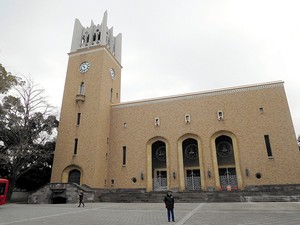By TAKAHIRO TAKENOUCHI/ Staff Writer
June 21, 2024 at 08:00 JST
A cell-transplant project has enabled rainbow trout to act repeatedly as surrogates for king salmon, a species that spawns only once in its life cycle, researchers said.
The method, developed by scientists of the Tokyo University of Marine Science and Technology, is expected to improve farming of pricy salmon varieties, contribute to healthy populations and protect the diversity of salmon genetic resources from climate change damage.
“Artificial culturing will play an increasingly important part from now,” said Goro Yoshizaki, a professor of fisheries science at the school. “We will be researching a new style of farming fish with high commercial value while utilizing rainbow trout as their parents.”
The king salmon, or Chinook salmon, takes three to seven years to reach adulthood. They release eggs or sperm cells only once before dying.
Rainbow trout, a smaller species from the same Oncorhynchus genus, can spawn every year throughout their six- to seven-year life.
This difference is attributed to germline stem cells, which turn into eggs and spermatozoa. These cells remain in the rainbow trout’s body for years, but they disappear from king salmon following one round of reproduction.
The research team aimed to confirm whether king salmon eggs could be generated with assistance from the rainbow trout’s excellent spawning ability.
Germline stem cells from king salmon were transplanted into young rainbow trout that were rendered incapable of producing their own germ cells.
Five of the 24 female rainbow trout laid eggs annually over three years between ages 2 and 4, while 10 of the 27 males produced sperm for four consecutive years from ages 1 to 4, the results showed.
After fertilizing the spawned eggs and sperm, the team concluded that king salmon fry were reproduced based on DNA examinations, hatching time and other features.
According to the team, the method can obtain king salmon eggs and fry every year through the surrogate trout parents.
The reproduced king salmon mated, resulting in the birth of grandchildren of the first-generation king salmon, the team said.
The researchers also transplanted the cells of the kokanee, an Oncorhynchus species that similarly spawns only once, into rainbow trout, which produced kokanee eggs and sperm.
Selective breeding processes traditionally require several years to improve a single generation of salmon. As rainbow trout are relatively easy to cultivate, its use can contribute to far more efficient and faster techniques for salmon breeding.
The team said rainbow trout could eventually serve as surrogate parents to preserve and restore endangered species through their frozen germline stem cells.
King salmon are currently at risk of disappearing in California and elsewhere due to rising water temperatures associated with global warming.
The researchers could not sample the reproduced king salmon to check their taste because they had to finish their academic paper first.
They did say the eggs are slightly smaller than ordinary king salmon eggs and might have a different taste because they received nutrients from rainbow trout mothers.
The team’s findings were published May 25 in the U.S. scientific journal Science Advances at (https://doi.org/10.1126/sciadv.adm8713).




















A peek through the music industry’s curtain at the producers who harnessed social media to help their idols go global.
A series based on diplomatic documents declassified by Japan’s Foreign Ministry
Here is a collection of first-hand accounts by “hibakusha” atomic bomb survivors.
Cooking experts, chefs and others involved in the field of food introduce their special recipes intertwined with their paths in life.
A series about Japanese-Americans and their memories of World War II